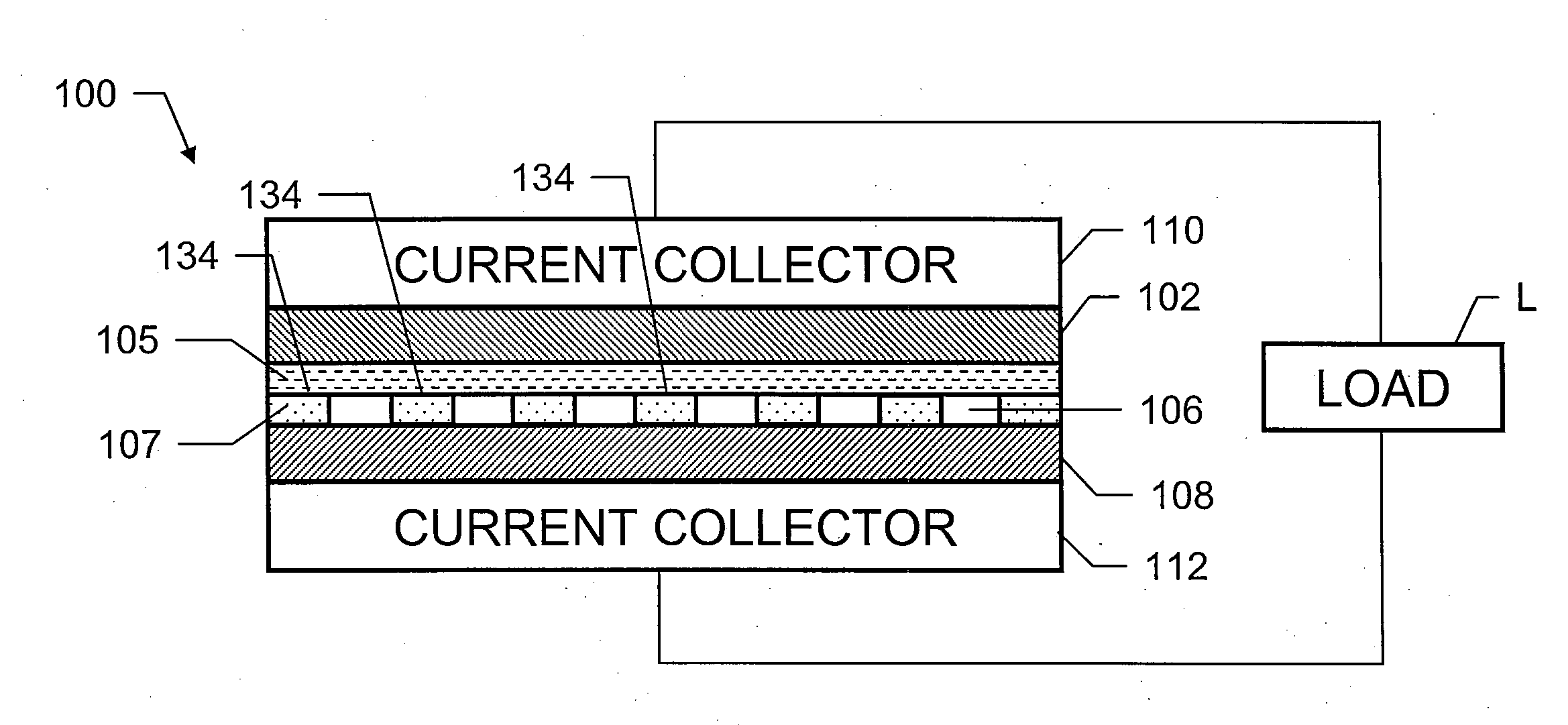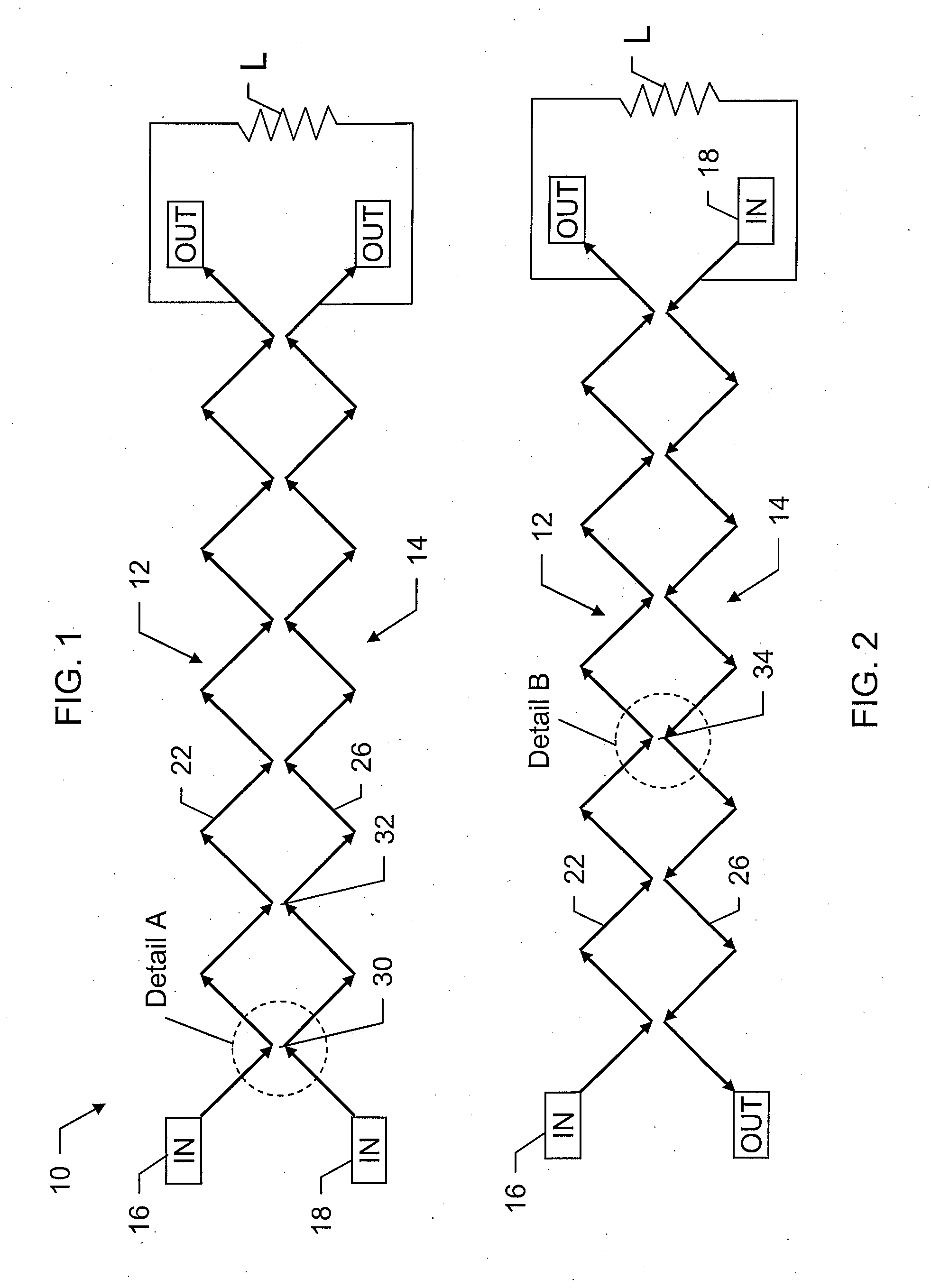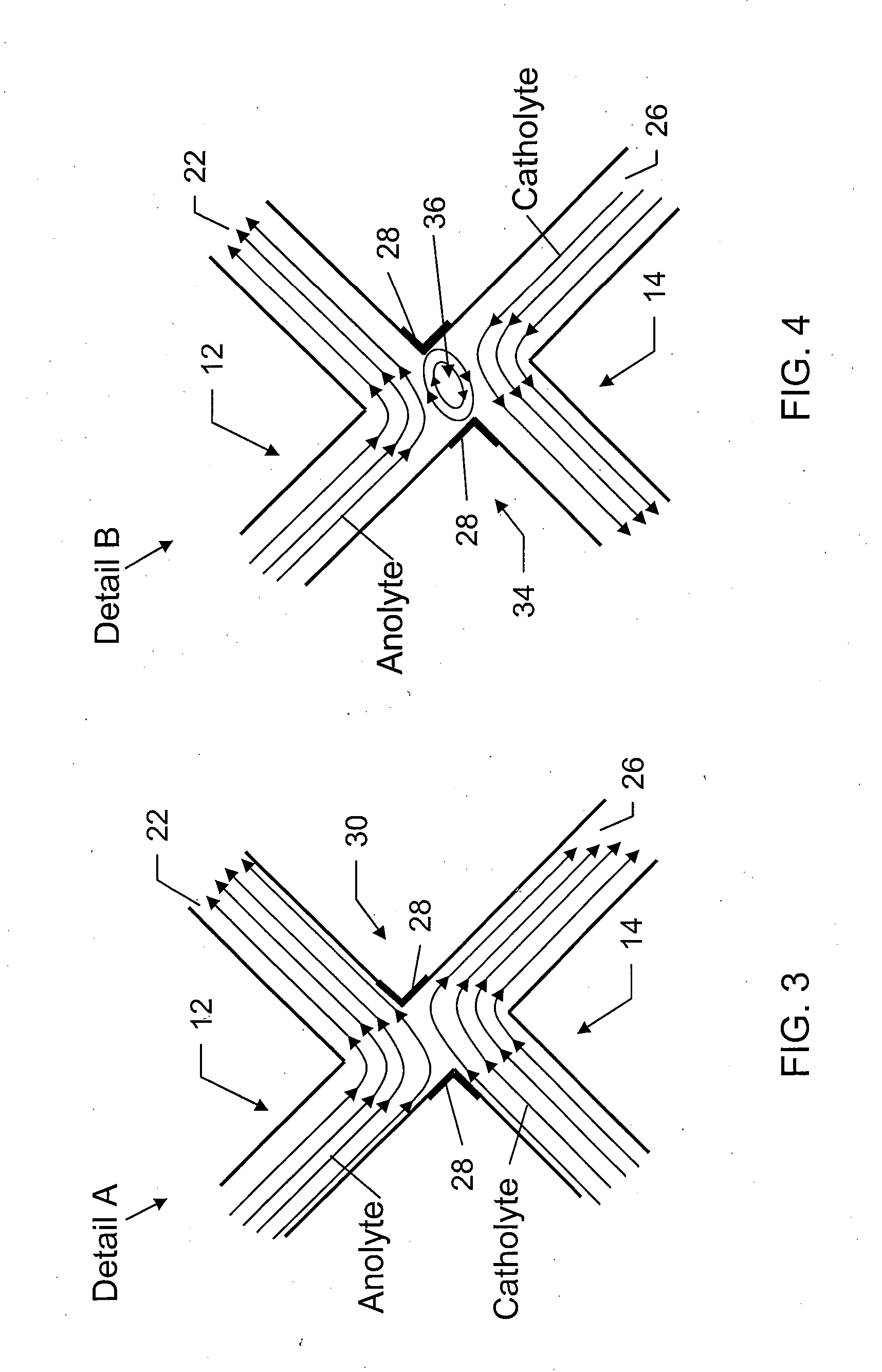Counter-flow membraneless fuel cell
- Summary
- Abstract
- Description
- Claims
- Application Information
AI Technical Summary
Benefits of technology
Problems solved by technology
Method used
Image
Examples
Embodiment Construction
[0022]The Figures illustrate several embodiments of various aspects of the inventions claimed. These embodiments are in no way intended to be limiting, and are intended only as an example for facilitating an understanding of the principles of the claimed inventions. In some instances, various components are illustrated schematically, as it is understood many different structures may be used.
[0023]In the illustrated embodiment of FIG. 1, a fuel cell system is generally indicated at 10. The fuel cell system 10 has an anode 12 and a cathode 14 that are each connected to a load L. The anode 12 and the cathode 14 may be solid in embodiments where the respective fluids flow across or along the anode and the cathode, or may be wholly or partially porous in embodiments where the respective fluid flow through the anode and the cathode, as discussed in further detail below. The system 10 also includes a fuel source 16 configured to supply a fuel, which may be mixed with an electrolyte, an oxi...
PUM
 Login to view more
Login to view more Abstract
Description
Claims
Application Information
 Login to view more
Login to view more - R&D Engineer
- R&D Manager
- IP Professional
- Industry Leading Data Capabilities
- Powerful AI technology
- Patent DNA Extraction
Browse by: Latest US Patents, China's latest patents, Technical Efficacy Thesaurus, Application Domain, Technology Topic.
© 2024 PatSnap. All rights reserved.Legal|Privacy policy|Modern Slavery Act Transparency Statement|Sitemap



